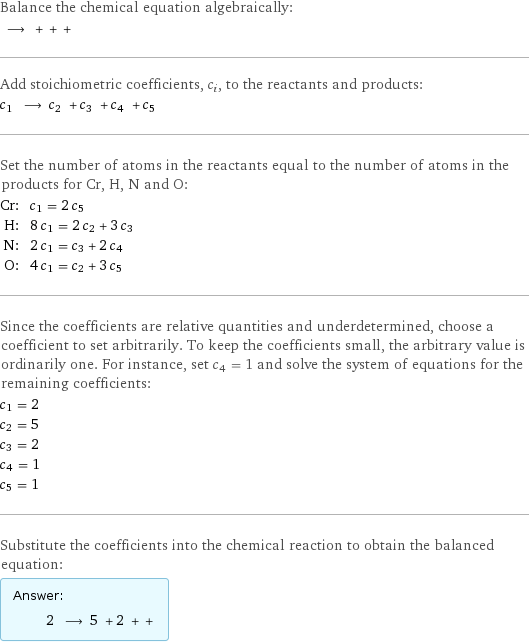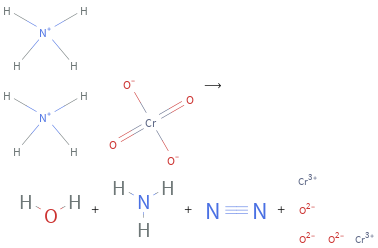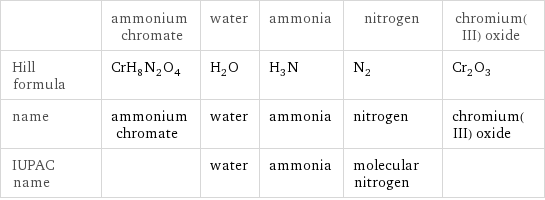Input interpretation

ammonium chromate ⟶ water + ammonia + nitrogen + chromium(III) oxide
Balanced equation

Balance the chemical equation algebraically: ⟶ + + + Add stoichiometric coefficients, c_i, to the reactants and products: c_1 ⟶ c_2 + c_3 + c_4 + c_5 Set the number of atoms in the reactants equal to the number of atoms in the products for Cr, H, N and O: Cr: | c_1 = 2 c_5 H: | 8 c_1 = 2 c_2 + 3 c_3 N: | 2 c_1 = c_3 + 2 c_4 O: | 4 c_1 = c_2 + 3 c_5 Since the coefficients are relative quantities and underdetermined, choose a coefficient to set arbitrarily. To keep the coefficients small, the arbitrary value is ordinarily one. For instance, set c_4 = 1 and solve the system of equations for the remaining coefficients: c_1 = 2 c_2 = 5 c_3 = 2 c_4 = 1 c_5 = 1 Substitute the coefficients into the chemical reaction to obtain the balanced equation: Answer: | | 2 ⟶ 5 + 2 + +
Structures

⟶ + + +
Names

ammonium chromate ⟶ water + ammonia + nitrogen + chromium(III) oxide
Chemical names and formulas

| ammonium chromate | water | ammonia | nitrogen | chromium(III) oxide Hill formula | CrH_8N_2O_4 | H_2O | H_3N | N_2 | Cr_2O_3 name | ammonium chromate | water | ammonia | nitrogen | chromium(III) oxide IUPAC name | | water | ammonia | molecular nitrogen |